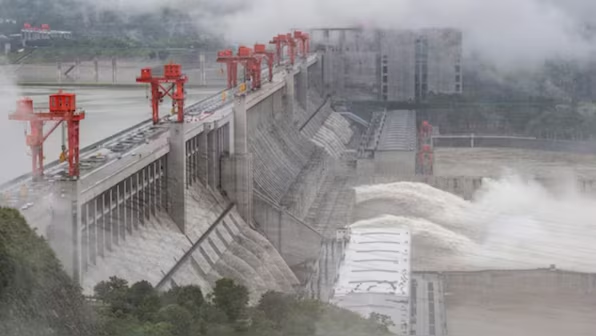China has begun construction of a colossal dam on the Brahmaputra River in southeastern Tibet, just across the border from Arunachal Pradesh. Framed as part of Beijing’s green energy ambitions, the $167 billion project has sparked serious concerns in India and Bangladesh about its potential to alter river flows and destabilize regional water security.
BY PC Bureau
July 19, 2025″ China has officially begun construction of a massive dam on the Brahmaputra River in southeastern Tibet, a development that has raised fresh concerns in downstream countries, particularly India and Bangladesh. The project, located in Nyingchi — just north of Arunachal Pradesh — was inaugurated on Saturday with Chinese Premier Li Qiang attending the groundbreaking ceremony, according to state media reports cited by AFP.
Approved by Beijing in December 2023, the dam is being billed as a major clean energy initiative aligned with China’s carbon neutrality targets and long-term development goals for the Tibetan Autonomous Region. China’s official news agency Xinhua reported that electricity generated by the dam will primarily be transmitted to other provinces while also supplying power locally within Tibet.
READ: KZC Urges Naga Body to End Ban on Kuki-Zo Movement
According to Xinhua, the ambitious construction plan involves five hydropower stations, with an estimated total investment of 1.2 trillion yuan (approximately $167 billion). Once completed, the project is expected to surpass the capacity of China’s iconic Three Gorges Dam on the Yangtze River — currently the world’s largest hydroelectric power station.
🌍 On July 19, CCP official Li Qiang launched a massive hydropower project in Tibet — on the Yarlung Tsangpo River, which flows into India as the Brahmaputra.
🇮🇳India warns: Beijing could cut off water or trigger floods — using rivers as a weapon.
💡 Behind it all: the CCP’s real… pic.twitter.com/aDg4CJt94N— NFSC Red Leaf Canada (@hli953777191713) July 19, 2025
However, the scale of the project has reignited regional anxieties. Experts and environmental groups warn that such large-scale interventions on the ecologically fragile Tibetan Plateau could result in irreversible changes to the region’s ecosystem and disrupt the Brahmaputra river system, which is vital to the livelihoods of millions in northeastern India and Bangladesh.
READ: Exclusive: We Can Scrap SoO, But Talks Need a Framework: Seilen Haokip
In January 2025, the Indian Ministry of External Affairs reiterated New Delhi’s concerns, urging Beijing to ensure that “the interests of downstream states of the Brahmaputra are not harmed by activities in upstream areas.” The Brahmaputra, known in Tibet as the Yarlung Tsangpo, flows eastward across southern Tibet before bending sharply to the south through India’s Arunachal Pradesh and Assam, and eventually into Bangladesh.
In response to India’s concerns, China maintained that the dam project would not have any “negative impact” on countries downstream. Yet, the lack of a comprehensive water-sharing agreement or transparent data-sharing mechanism between the two nuclear neighbors continues to fuel unease, particularly in the absence of an independent international environmental assessment.
Environmental groups have also warned that the dam’s construction could disturb regional biodiversity, affect glacial melt dynamics, and pose risks in a region already vulnerable to earthquakes and landslides.
With tensions already simmering along the India-China border, the construction of the dam adds another sensitive layer to the complex geopolitical and ecological dynamics of the eastern Himalayas.













